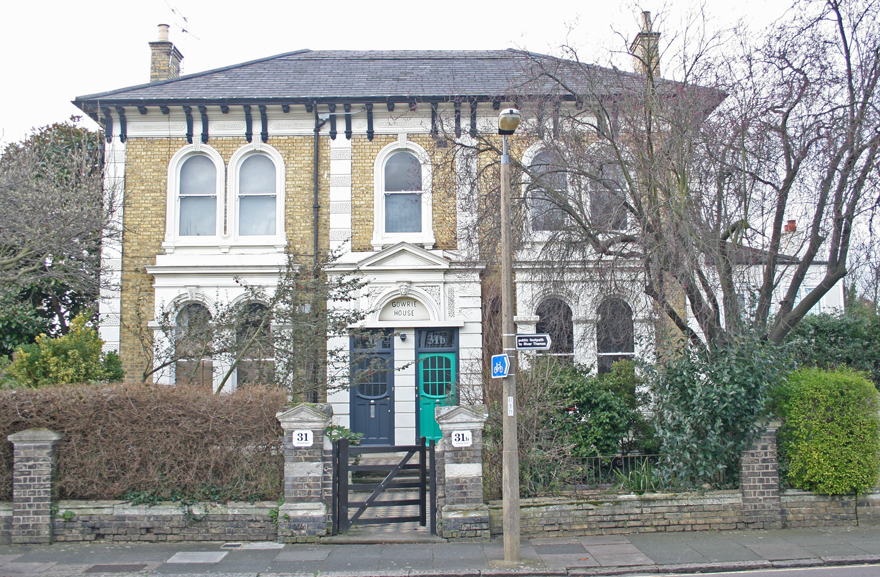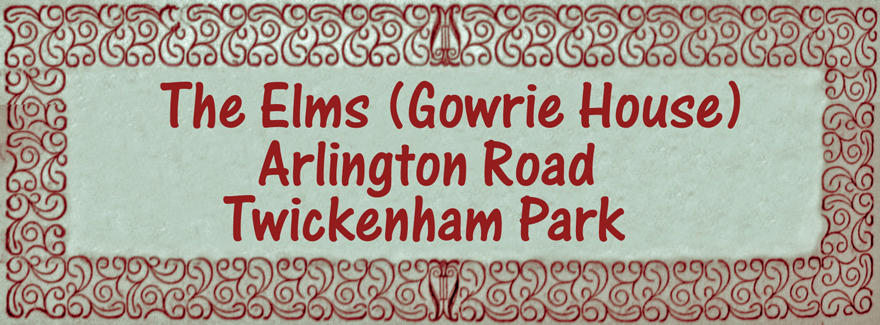
The Elms Arlington Road Twickenham Park
The first official document we have traced for this property is the 1861 census which is shown below.

There is some confusion between this property located in what became Arlington Road Twickenham Parkand the property fronting the river Thames currently named The Elms.
The Arlington Road property was initially named The Elms Twickenham Park, and later renamed Gowrie House to avoid confusion.
The first occupant of The Elms Arlington Road was James Veitch Shaw, a law stationer, and his wife Nancy.They had married in 1831 and moved into The Elms shortly after it had been built just before the 1861 census.
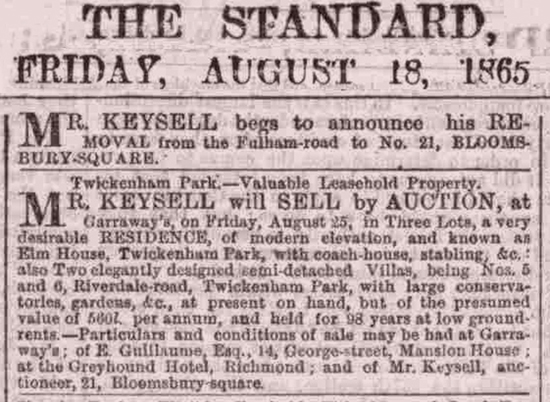
In 1865 the leasehold of the property was auctioned, the house being called Elm House, and the Shaws remained in residence.
1871 census The Elms
The 1871 census below lists the Shaws together with the Baker family who lived here for a short while.
Also resident were Mary Maria Bond and her daughter Ellen Elizabeth Bond.
A coachman and his family lived in the adjascent coach house and stables.
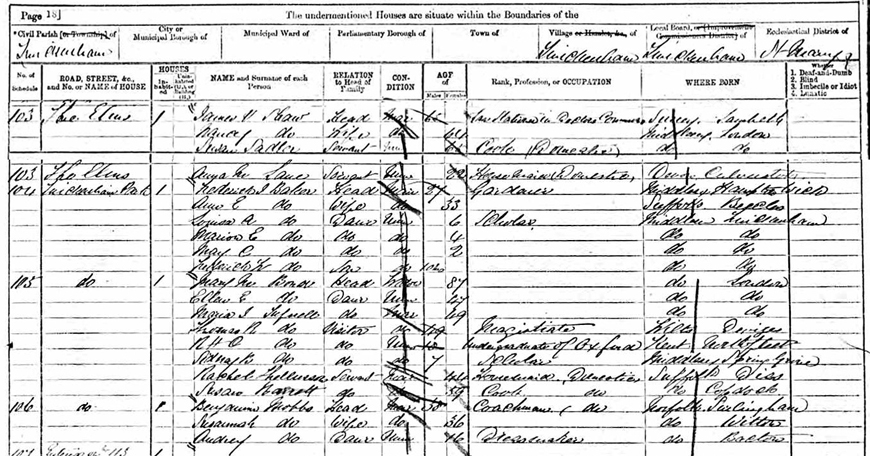
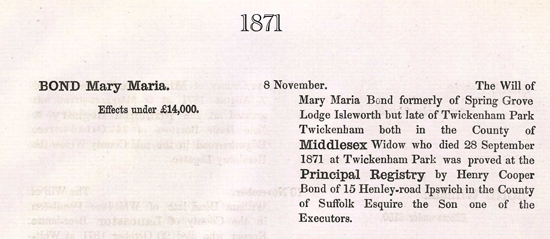
In September 1871 Mary Maria Bond died. This was followed by the death of James Veitch Shaw 15th July 1876. He was buried in Hendon.
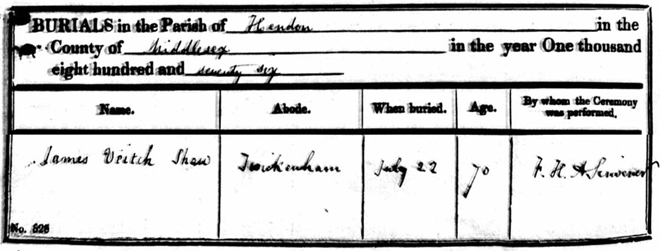
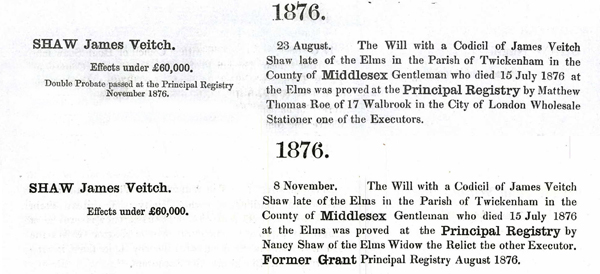
1881 census The Elms

The 1881 census above records just Ellen Elizabeth Bond, a visitor and three servants living in the house.
James Veitch Shaw’s Wife Nancy had moved out of the property. She died in 1888.
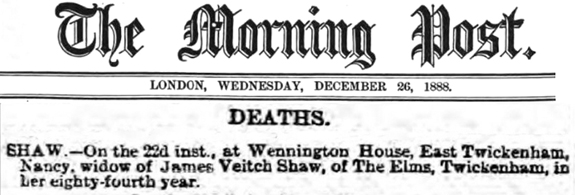
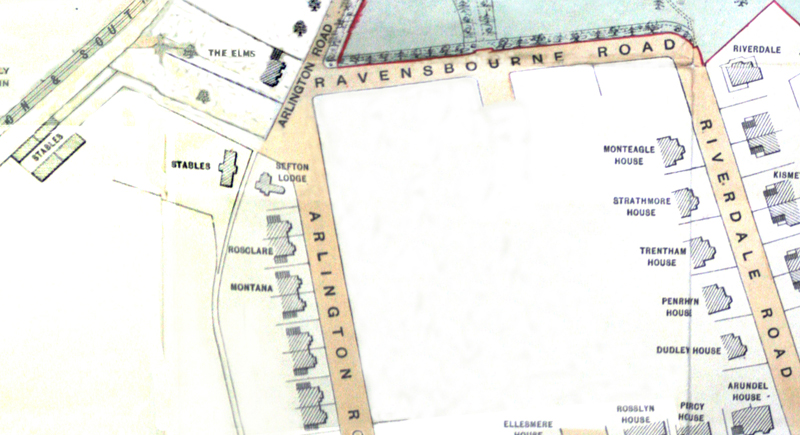
The 1908 map above shows the relative position of The Elms in Arlington Road.
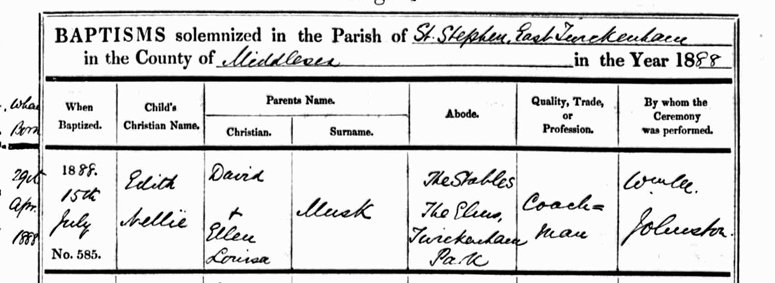
The Musk family lived in The Elms coach house in the late 1880’s. Two of their children were born at that time.
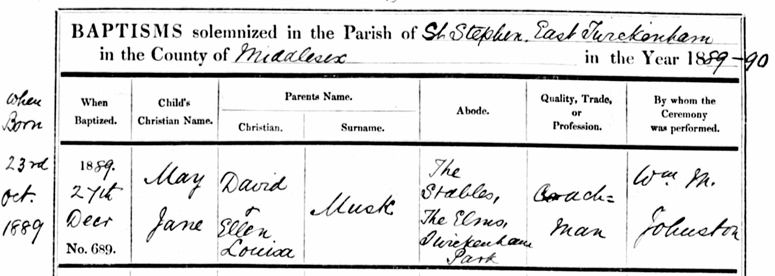
1891-1901 census The Elms

The 1891 census above shows Ellen Bond living in the household with just two servants.
David Musk was still employed as coachman.
Below is the 1901 census with things little changed.
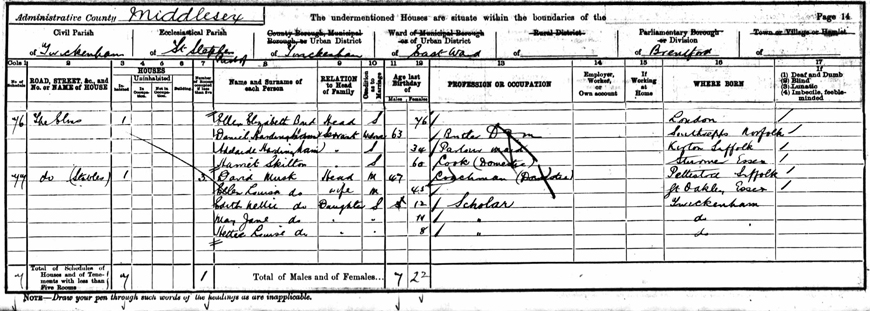

1911 Census The Elms
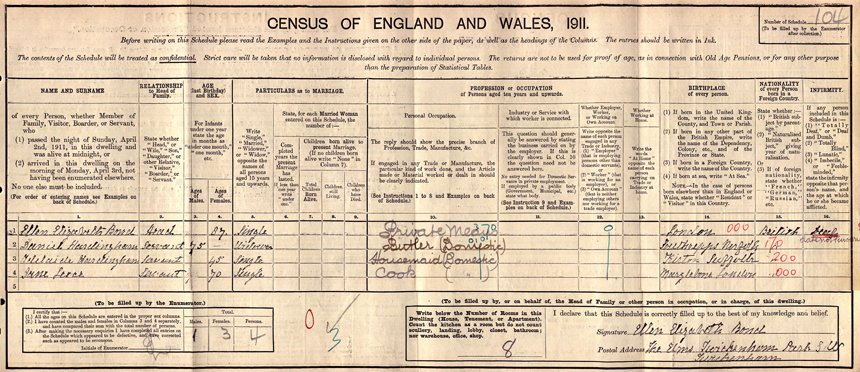
The 1911 census above lists Ellen Bond now 87 with three domestic servants. The census covering The Elms stables shows the Musk family still resident.
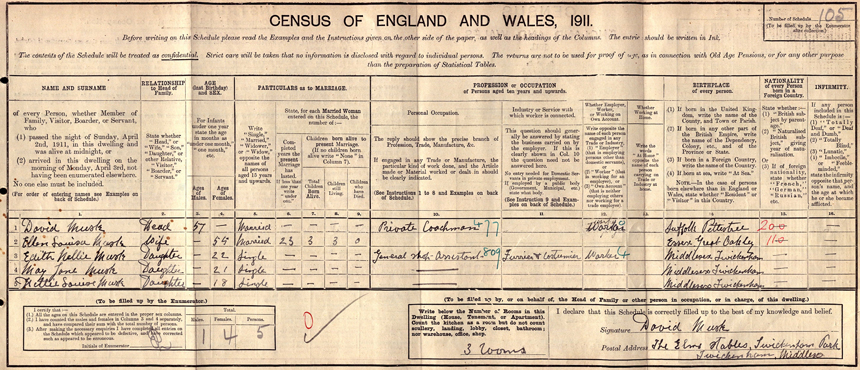

Ellen Elizabeth Bond died 19th September 1913 aged 89
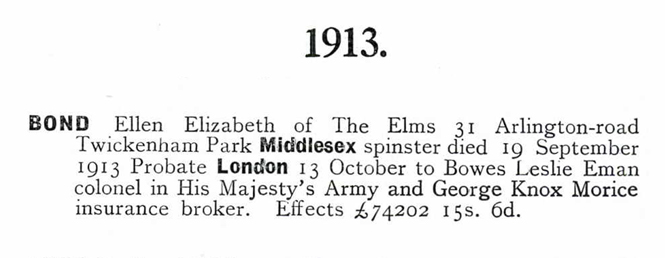
The property was renamed Gowrie House sometime in the 1920’s and has been subdivided as flats.
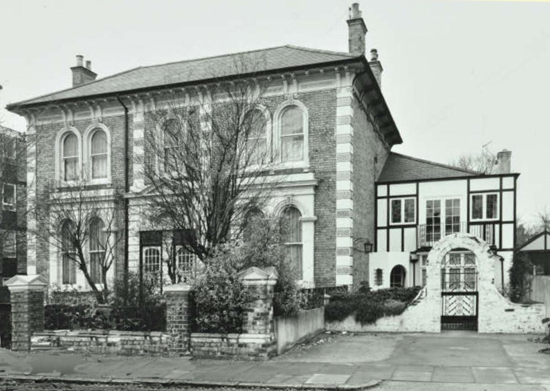
Gowrie House photographed below in 2013
